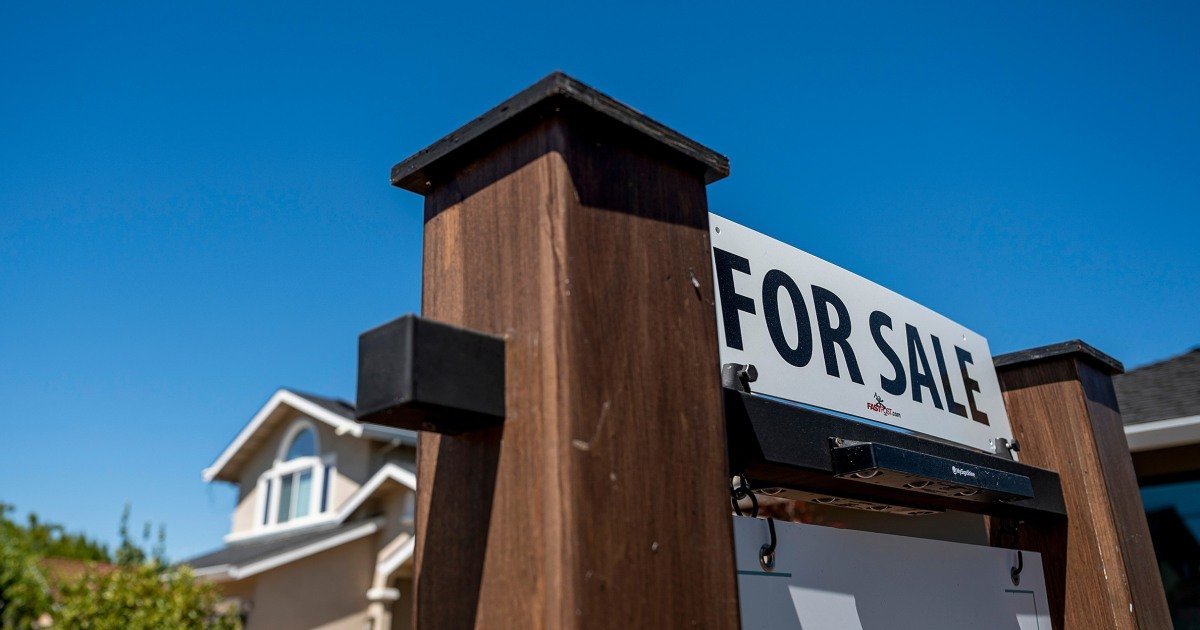New year, same old real estate market: The high mortgage rates, low inventory and dismal affordability that have plagued housing look set to persist through 2025.
There were some signs of improvement late last year. Pending home sales rose for four straight months through November, raising hopes that the two-year freeze in residential real estate was beginning to thaw. Industry experts have said buyers are increasingly adjusting their expectations, deciding they can’t wait for lower home mortgage rates to emerge.
In some markets, consumers “are taking advantage of greater available inventory,” National Association of Realtors chief economist Lawrence Yun said in a statement. “Mortgage rates have averaged more than 6% over the past 24 months. “Buyers no longer expect or expect mortgage rates to fall substantially.” Particularly in the South, where relatively more homes are available and jobs are plentiful, pending home sales rose 5.2% in November.
Mortgage rates fell late last summer ahead of the Federal Reserve’s interest rate cut in September, its first in four years. But they have remained at decade highs and began to move towards the 7% mark towards the end of the year. Therefore, it was no surprise that mortgage applications fell almost 22% at the end of December. It’s true that this is typically the slowest month for home buying activity, but now that the central bank is signaling caution about the pace of further rate cuts this year, hopes that the Mortgage rates will fall sharply in the short term.
“We no longer believe mortgage rates are going to go up to five next year or even the year after that,” Robert Reffkin, CEO of real estate company Compass, told CNBC last month. “We think they will remain around 6% for the next two years.”
Broader economic uncertainties are also weighing on the housing market, particularly inflationary risks from President-elect Donald Trump’s economic agenda. Economists widely agree that tariffs, more tax cuts and restricted immigration threaten to raise consumer prices.
Homebuilders told NBC News last fall, before the election, that Trump’s planned mass deportations of undocumented people would deplete their largely immigrant workforce, slowing construction and raising prices. But some said they doubted the incoming administration would be capable of carrying out such a broad crackdown.
Meanwhile, the bond market is already factoring in some of these policy uncertainties, and since mortgage rates are set based on the yield on the 10-year Treasury bond, home buyers hoping for relief may be disappointed. A survey of mortgage lenders last year found that 56% of prospective buyers wanted a mortgage rate between 5.5% and 5.75%, a range that appears out of reach in the short term.
High mortgage rates are a major factor in the worst housing affordability in decades. The Federal Reserve Bank of Atlanta considers affordability for a median-income family to be at its worst level since 2006. Many who have been entering the market are stretching their budgets to do so. An NBC News analysis of federal data found in October that about 1 in 4 new middle-income homeowners — twice as many as a decade earlier — are purchasing properties whose expenses leave them financially burdened.
“This persistent rise in prices and interest rates has created a challenging environment for both first-time buyers and those looking to move up the real estate ladder,” data firm CoreLogic noted last month. Many existing homeowners who previously secured ultra-low mortgage rates likely feel trapped now, which “intensifies the inventory shortage by further limiting the supply of homes on the market,” he wrote.
Still, new construction homes are coming to market in some parts of the country in high demand, CoreLogic said, including Florida and Texas, “offering a glimmer of hope for a better-balanced market in 2025.”







